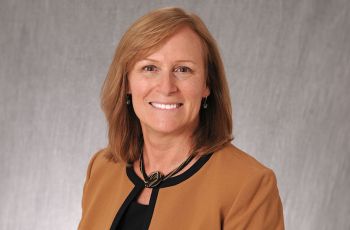Leighton Ku, Ph.D., M.P.H., professor and director of the Center for Health Policy Research in the Department of Health Policy at the School of Public Health and Health Services, doesn’t try to quell the political and ideological discord ignited by the passage of health care reform. “Unfortunately, empirical information does very little when people have strong ideological beliefs,” he maintains.
But above the din, two key questions have emerged that Ku feels quite comfortable answering: Will the United States have the primary care capacity to serve the newly insured? And can we contain the growing costs of health care? These issues, he and his colleagues have found, are largely addressed within the health care bill itself.
“The $11 billion in additional grant money for non-profit community health centers included in the health care reform bill will both bolster the capacity of the nation’s primary care system and reduce the long-term growth in health care costs,” the team concluded in a report released June 30, 2010, by the Geiger Gibson/RCHN Community Health Foundation Research Collaborative at GW’s School of Public Health and Health Services.
According to the report, the expansion of community health centers (local, non-profit, community-governed health care providers that offer comprehensive primary and preventive care in medically underserved communities) will increase the number of patients receiving primary care by at least 18 million by the end of the decade, effectively doubling the number of people served.
Not only will the law create more sites and bigger venues, the report says, but it also will shift the patient demographic from uninsured to insured. Because 32 million more people are expected to be insured by 2019, health centers — which accept patients regardless of ability to pay — will absorb fewer uncompensated health care costs, thus increasing their capacity to serve. “These two forces, additional grant funding on one hand, more insurance coverage on the other, act synergistically to enable health centers to grow very rapidly,” says Ku, who is an expert in health care financing and budgets.
Community health centers are lauded for their team-based approach to care. As opposed to private practices, the centers thrive on a diversity of professions, with nurse practitioners, physician assistants, and community health workers all helping to deliver care. “This is a more efficient way to deal with the scarcity of primary care physicians, without risking quality,” says Ku. “This is the kind of team-based care that primary care needs to adopt in the future.”
In addition to helping millions of people receive primary care, the expansion of community health centers will save the country billions of dollars. According to the analysis, the investment will reduce total national medical costs by more than $180 billion over the next 10 years, including more than $50 billion in federal Medicaid expenditures, and more than $30 billion in state Medicaid expenditures. Even after controlling for differences including insurance status, health, gender, and age, the annual savings from community health centers totaled as much as $1,100 per person.
Although the exact savings are subject to variability, the findings are supported by prior research demonstrating that community health centers improve the quality of care and reduce the need for more expensive treatment. Even more important, the predictions are likely underestimates. If future appropriations are approved, medical costs may be reduced by as much as $300 billion over the next 10 years.
“We have been running community health centers since the 1960s,” says Ku. “Our government has supported this system on a bipartisan basis for decades, and this proven system of care will continue to make a difference in the future.”


